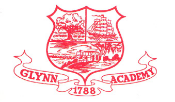Unit 1.2-Dar al-Islam (Day 1-Cultural Developments & Technology and Innovation)
- What
- Unit 1.2-Dar al-Islam (Day 1-Cultural Developments & Technology and Innovation)
- When
- 9/2/2020
Teacher : J. Chasse-Fernald Course/ Subject: AP World History class video: click here Homework: Due Wednesday (9/2) 1.2 Dar al Islam notes (Cornell) from Amsco * Note-this is an individual task...the likelihood of your notes even resembling your classmates is even more rare than the last time when you were asked to outline. Opening (I Do) An engaging process for lesson introduction that is specifically planned to encourage equitable and purposeful student participation. Describe the instructional process that will be used to introduce the lesson. TKES 1, 2, 3,4,5, 8,10 Standard: K.C.3.1.III.D.iii.--Islam, Judaism, Christianity, and the core beliefs and practices of these religions continued to shape societies in Africa and Asia. ILLUSTRATIVE EXAMPLES Transfers: § Preservation and commentaries on Greek moral and natural philosophy § House of Wisdom in Abbasid Baghdad § Scholarly and cultural transfers in Muslim and Christian Spain K.C.-3.2.II.A.i.--Muslim states and empires encouraged significant intellectual innovations and transfers. ILLUSTRATIVE EXAMPLES Innovations: § Advances in mathematics (Nasir al-Din al-Tusi) § Advances in literature ('A'ishah al-Ba'uniyyah) § Advances in medicine Learning Target: Success Criteria: Skills: Support an argument using specific and relevant evidence Describe specific examples of historically relevant evidence Explain how specific examples of historically relevant evidence support an argument Introduction/Connection: Technology and Innovation Developments in Dar al Islam Human adaptation and innovation have resulted in increased efficiency, comfort, and security, and technological advances have shaped human development and interactions with both intended and unintended consequences. Cultural Developments and Interactions in Dar al Islam The development of ideas, beliefs, and religions illustrates how groups in society view themselves, and the interactions of societies and their beliefs often have political, social, and cultural implications DIRECT INSTRUCTION: 1.) Facts vs. Evidence Differentiate between Facts vs. Evidence 2.) claims / assertions / categories of analysis Use the Facts provided to develop claims / assertions / categories of analysis 3.) Forming an Academic Paragraph Claim = Topic Sentence Rest of paragraph= evidence SUPPORTING/PROVING the claim Work Period (We Do, You Do) Students learning by doing/demonstrating learning expectations. Describe the instructional process that will be used to engage the students in the work period. TKES 1, 2, 3, 4, 5, 7. 8,10 GUIDED PRACTICE: * Provide a sample of how to complete the activity * HRS CCoT: How did the development of Islam in the Arabian Peninsula benefit from the interactions among Jews, Christians, and Zoroastrians as faiths practiced by the local peoples? * HRS causation: What role did military expansion and the activities of merchants and missionaries have on the spread of Islam? INDEPENDENT/COLLABORATIVE PRACTICE/DIFFERENTIATION: Closing (We Check) Describe the instructional process that will be used to close the lesson and check for student understanding . TKES : 1,2,3, 4,5,6,7,8 SUMMARIZE/CHECK FOR UNDERSTANDING: Key Takeaways A) Islam contributed to Technological innovation through diffusion of knowledge in and the spread of that knowledge throughout Dar-al Islam and beyond. Be able to provide specific evidence/examples to support this. B) Governance practice shared many similarities within Dar-al Islam, but varied in key aspects depending on region. Be able to provide specific evidence/examples to support this. C.) Islam itself as a religion shared many similarities within Dar-al Islam, but Islamization varied in key aspects depending on region. Be able to provide specific evidence/examples to support this.
* Explain the effects of intellectual innovation in Dar al-Islam.
